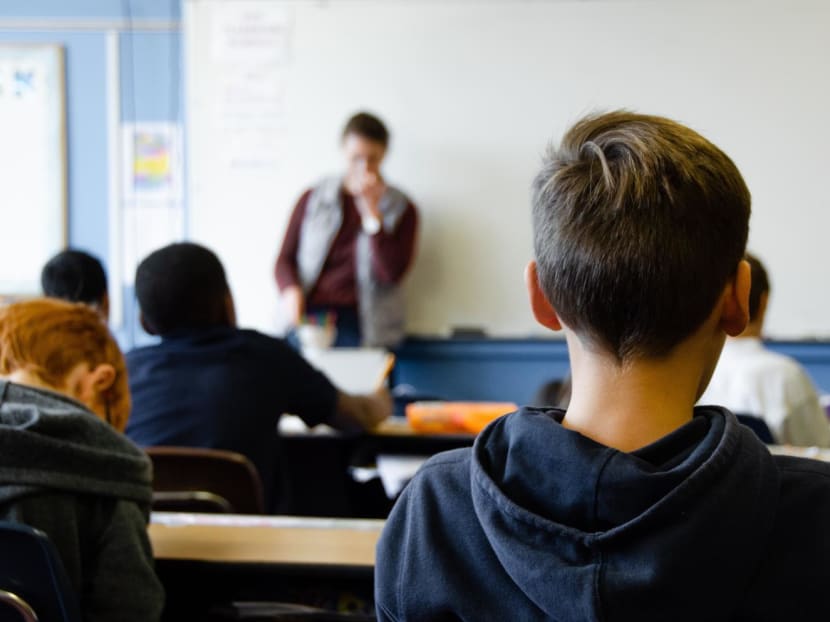Commentary: How the International Baccalaureate is re-evaluating education to focus on the well-being of students, teachers
The pandemic has increased the focus on well-being across the education landscape, particularly among students who adapted to remote learning methods and decreased face-to-face interactions with their lecturers and peers.

As we take stock of the current state of student well-being, it is important that we, as an education sector, prioritise meaningful change over the creation of a flawless system of wellness, says the author.
The pandemic has increased the focus on well-being across the education landscape, particularly among students who adapted to remote learning methods and decreased face-to-face interactions with their lecturers and peers.
This can be seen through the mental health survey conducted by the People's Action Party concerning the #BetterTogether initiative, where results showed that two in five people have personally experienced mental health struggles.
With a new academic year approaching, the prolonged toll on students' and teachers' physical, mental, and emotional well-being caused by this pandemic continues to exacerbate.
Parents and educators seem united in wanting holistic schooling for their children and students; and are looking towards learning that focuses on every aspect of student development, including students' social and emotional wellness.
At the International Baccalaureate (IB) and for many other education organisations, that has also meant re-evaluating education to put well-being at the core of every decision.
When making decisions, two pertinent questions arise:
- How can we better redesign the future of curriculum and exams to support the well-being of both students and educators?
- Where can we apply the right amount of curriculum rigour to engage students in social-emotional learning while fostering student agency and curiosity?
These are just a few questions leading the education sector into a new chapter of holistic student wellness.
THE WELL-BEING CRISIS
Well-being is central to student learning. Without it, a student's mind and body become burdened to the point that they cannot absorb new information.
Crises such as the pandemic have had a devastating outcome on student learning, as adults and children alike developed fears around safety, loneliness, and unknown futures.
On the flip side, we are also reminded of how wellness is at the crux of teaching as we continuously see the increase in burnout for teachers.
We know that the time to intervene in the well-being crisis is now. So how can we ensure that learning and well-being work together to build better classroom experiences for all?
1. Focus on the flexibility of teaching and assessment
Learning from lessons of Covid-19, we know that schools and teachers understand their classrooms best.
Hence, adaptive learning models are essential for student learning, especially as other crises, like changing policies around Covid-19, have continued to impact student learning and concentration. Giving educators the agency to adjust their learning materials allows them to meet students' needs.
The IB suggests that a well-being policy is one of the most effective means for improving students’ attainment outcomes.
In 2021, IB published a white paper titled “What is well-being?”, aimed at supporting IB teachers and school leaders in fostering a better understanding of what well-being means and the integration of well-being into the architecture of their school policy and practice as part of successful implementation of IB programmes.
More recently, the IB has published a suite of video resources designed to help both IB World Schools and other education settings aimed to support schools in leading well-being through a crisis.
2. Adopting a whole-school approach
This does not mean providing less rigorous coursework but focusing on the development of the whole student and the whole school community, not just curriculum models and exam results.
Emphasising well-being does not have to conflict with the rigour of a programme. Instead, they are aims that can be met simultaneously. Throughout our history, the IB has sought to be a progressive force for good in education.
Embedding well-being into curriculum, practices and school life seems to be more effective than implementing well-being as an “add-on feature”.

IB recommends adopting a whole-school approach, as it ensures that all components of the school organisation work coherently together by engaging the whole community, including pupils, teachers, parents and community stakeholders.
At the policy level, four domains are usually covered by the whole-school approach: Systems and structures; relationships; teaching and learning; and environment (including the school culture and ethos, as well as physical aspects of the school environment).
Teachers modelling well-being behaviours, teaching competences, positively engaging students within the classroom, and school climate are all important predictors of student well-being.
3. Prioritise progress over perfection
As we take stock of the current state of student well-being, it is important that we, as an education sector, prioritise meaningful change over the creation of a flawless system of wellness.
In Singapore, we have seen progressive implementations of "Grace Days" to improve undergraduates' mental health. Grace Days allow delays beyond a specified deadline that can be applied to all assignments and do not need prior approval for usage.
The IB echoes the sentiments of offering multiple pathways to diverse students through its focus on teaching, curriculum and assessment:
- Subject-group flexibility strategy for IB Middle Year Programs (MYP): Allows students in years 4 and 5 of the MYP the option, if appropriate, to engage in the study of fewer than eight subject groups
- Such flexibility is meant to give students the opportunity to explore their interests in-depth by taking more than one course in a subject area. Additionally, this allows schools to be more aligned with local education requirements and norms
- Adapted assessment for May and November 2021 and 2022 sessions: Due to the global disruption to education and the impact on students, the IB introduced adaptations to help address the challenges caused by the pandemic, including adjustments to learning, teaching, and assessment, for all students enrolled in Diploma Programme and Career-related Programme subjects
NEW MODELS OF LEARNING
Post-intervention, we must be deliberate about recreating spaces of well-being and curiosity, not just because it fosters deeper learning for students but also helps to build healthier, happier school communities where teachers, parents and staff thrive as well.
As part of this, education and schooling cannot be seen in isolation from what goes on beyond our school gates.
It is our duty to do everything in our power to recreate and build new learning settings that enable holistic development in students. This can be achieved by taking the following steps:
- Creating a safe environment for mistakes: Model and encourage low-stakes mistake-making where students can experiment, extend their thinking, puzzle through a dilemma and try new pathways without worrying about achieving the “correct” answer the first time.
Encourage students to learn from their mistakes by using reflection to make abstract learning processes more visible and memorable. This contributes to a growth mindset.
- Connecting the classroom to the outside world: Provide opportunities for students to make connections between lessons and their everyday lives.
Encourage students to raise questions about the relevance of the learning session to current world events.
- Engage students in the collaborative process: Emphasise that diverse ideas are important and that there are multiple ways to reach the intended goal; use this to introduce the importance of compromise and group decisions.
Model and encourage the use of listening, sharing, explaining, turn-taking, reflecting, agreeing and even disagreeing.
- Encourage students to wonder, identify knowledge gaps and share ideas: Model and encourage students to ask both “inward” and “outward” questions to help them to reflect, and identify and fill knowledge gaps.
Model and encourage wondering about what is unknown during a lesson to increase curiosity. Incorporate peer-to-peer discussions during lessons to help students identify and fill knowledge gaps and share ideas.
- Link creative self-expression to curiosity: Regularly integrate opportunities for students to follow their curiosity in trying out new ways to express themselves.
Support students’ confidence in both their creative capabilities and their creative outputs. Seek opportunities to point out how students’ creativity and curiosity are valuable to the class, school and broader community.
These are all actionable steps that schools can take this year to improve the mental well-being of students and educators alike.
ABOUT THE AUTHOR:
Olli-Pekka Heinonen is the director general of the International Baccalaureate. Prior to the IB, he served as the director general of the Finnish National Agency for Education.






